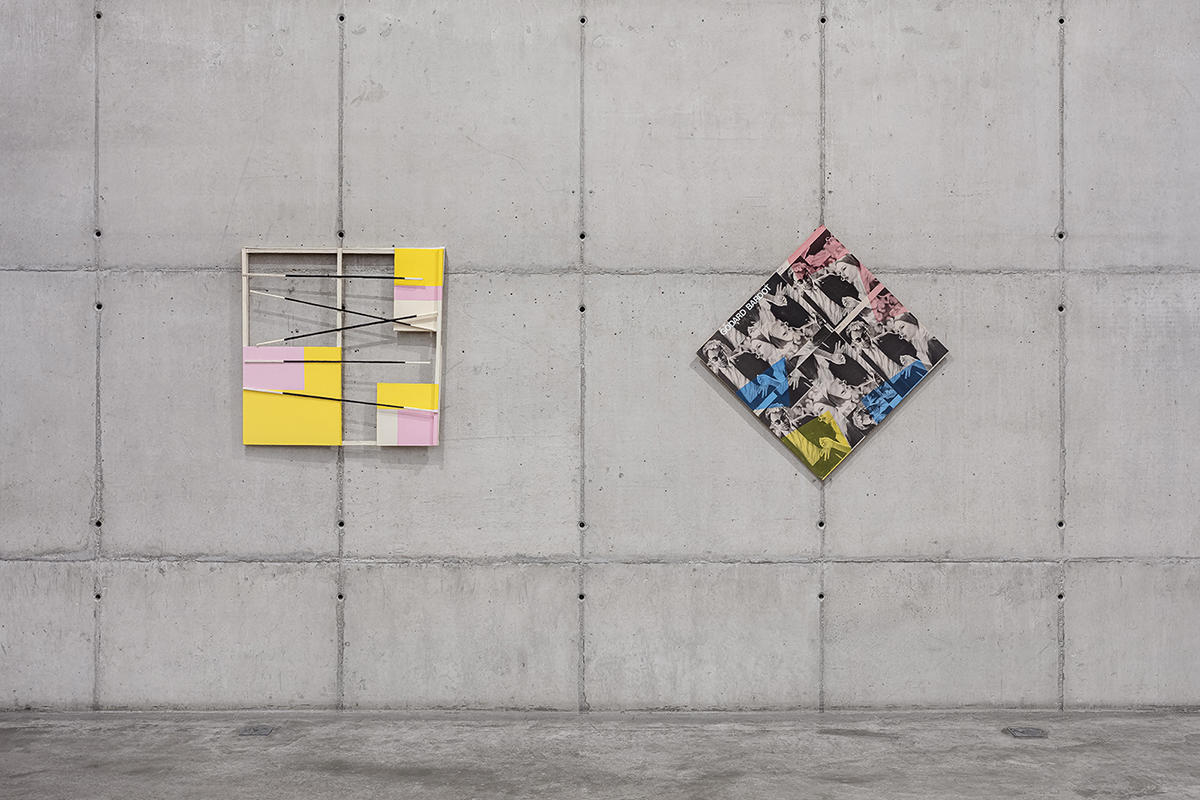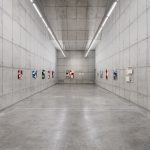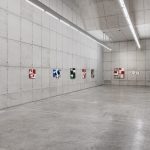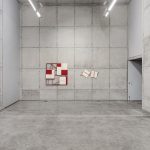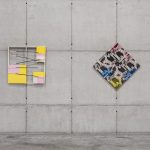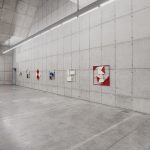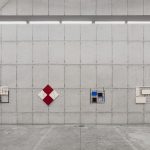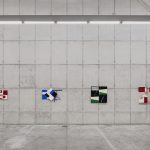LISTEN TO THE FORM
1- Construction and geometry, yes. But nothing here seeks the silence, the stability, the rest, not even unchangeable and abstract laws of an ideal world.
2- We face a state of equilibrium, there is no doubt, but the constructed system presents a series of perturbations that we perceive as fields of energies. The big question is the rhythm: planes, mass, fullness and emptiness organize themselves musically; as in architecture, if you were, as long as we consider how much architecture there is in music, or: what in architecture is musical.
3- The visual space is asymmetric, but its rhythms are kept under the limits of the plane, which seems to rescue the dynamic that it itself provides.
4- I think of Le Corbusier, specifically in his exploration of the square and cube. Moreover, I think of the climax of his research, represented by a house that he defines as “a box in the air”, the Villa Savoye (1929-1931). There, the geometric limitation of the box lends its accuracy and simplicity to a complex and exciting syntax, the architecture achieved, “within his self-imposed square, the spiral qualities of asymmetry, rotation, and peripheral dispersion” (Kenneth Frampton, Modern Architecture: a Critical History). In other words, conceived in terms of movement and light, the plant presents its internal forms to the structure with enormous daring – ramps and spiral stares -, while the cubic form that envelopes them ensures the order of the whole set. With the reinterpretation of certain principles of cubist art, Le Corbusier abolished the statism – thanks to the construction of “mobile” spaces, the transparency and “opened” structures -, geometrized the formal elements and rigorously organized the space, giving to it, at the same time, a dynamic continuation.
5- Without resorting to spirals and curves, Luciano Figueiredo achieves an intense dynamism “inside his self imposed square”. The audacity of creation – its liberty – requires, we could say, a measure, a limit that precisely allows it order to be explored, contested and revolt.
6- The plane of the canvas is crossed in several directions. In terms of drawing, we could say that it is crossed, or cut by lines. But they are much more than that: they are fine volumes of different extensions. Sticks? Yes, and more than that: they are minimal canvases, three-dimensional, that project themselves over and between the planes, while these, disposed at different levels, stand out in a field of installed force – and never broken – by the square.
7- And, it is essential to pay attention to this, we face an unequivocal handmade quality. It is not about, however, something outside creation: the artisanal is intrinsic to the process. The seeking of special and chromatic solutions can be perceived in its own materiality. Or even, the speciality features also the technique of artist-artesian, who manipulates, cuts, glues, covers, stretches. So, the memories of nature and body and process – its temporality – are saved, as true forms, as architecture that fully commits itself to making the built space and the perceptual space coincide.
8- It is worth noting that Luciano works on a flat surface: all the construction emerges on a large table on which he discovers solutions to problems that arise right there, after a few previous studies. We can say that the artist previously projects the limits of drawing, anticipating a field of formal demands that will show up only during the long and focussed construction march. The previous plant does not define if not the starting point. In this way, the vague and overused term “organic” seems a fair way to treat Luciano Figueiredo’s work, because this creator process develops itself, not obeying to what is devised and calculated, but as a permanent state of seeking, research, observation, such as a system that transform itself at each lance, each choice, generating new hesitations, perplexities, making present so a very physical, emotional and psychic demand. Realizing that the singularity of the work got to its terms requires the recognition of an unpredicted conclusion, what will not spare even the artist himself of being surprised, while, suddenly, the plane can be fixed in a vertical position – on the wall. Call it a game, if you will, insofar as physical and mental expenditure is organized by rules that define loss and gain, error and success, decisions taken between extreme lucidity and chance, objective knowledge and intuition.
9- It could be said that Luciano Figueiredo carries forward principles of neo-conretism, expanding it through experience, through constant research, through the desire for invention; elevating it to the level of a decidedly contemporary art.
10- I will say that these works make geometry sing.
Eucanaã Ferraz
